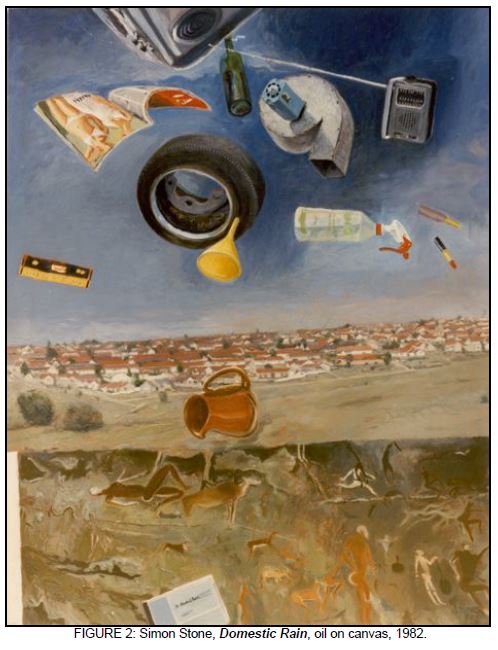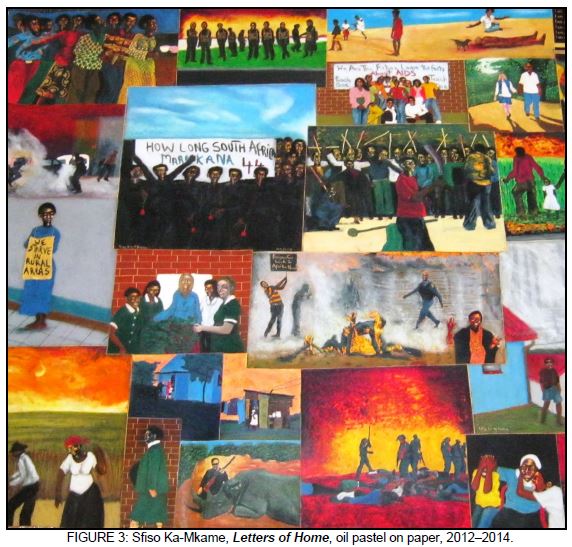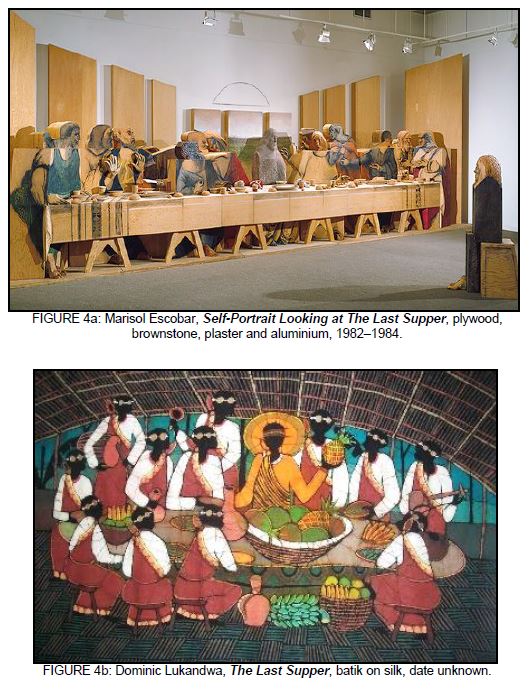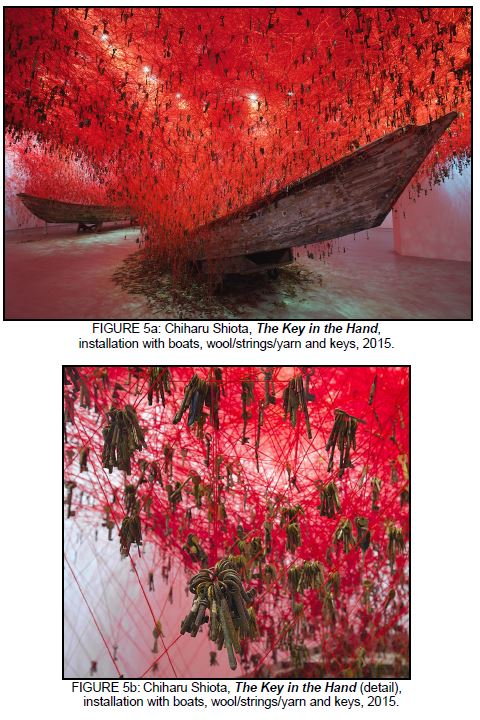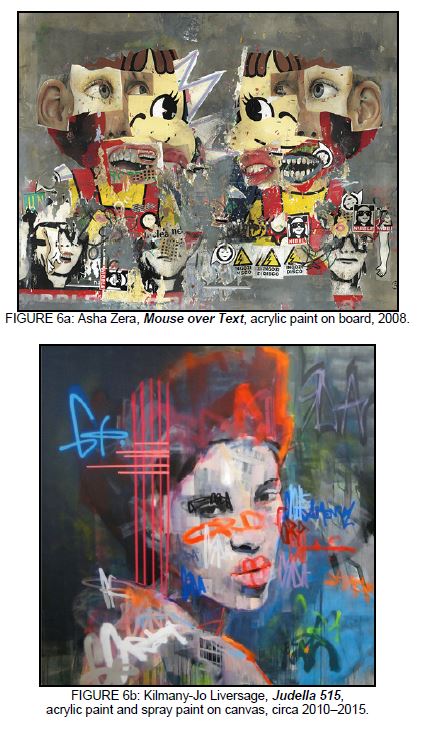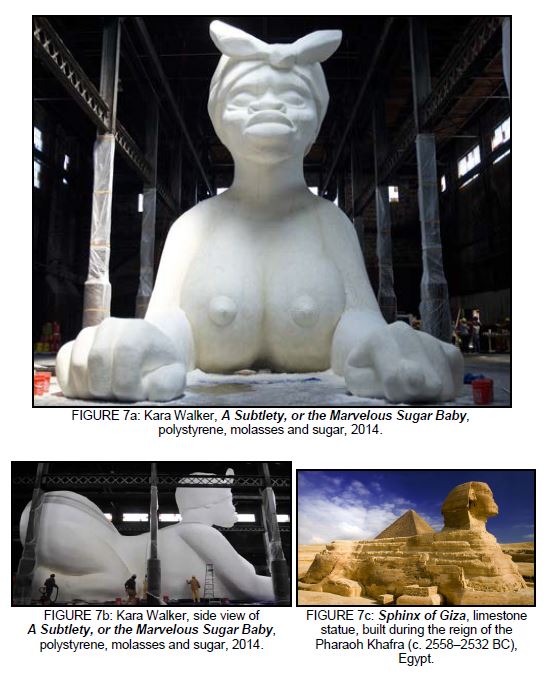VISUAL ARTS GRADE 12 QUESTIONS - NSC PAST PAPERS AND MEMOS NOVEMBER 2016
Share via Whatsapp Join our WhatsApp Group Join our Telegram GroupVISUAL ARTS
GRADE 12
NSC PAST PAPERS AND MEMOS
NOVEMBER 2016
INSTRUCTIONS AND INFORMATION
In this examination you must demonstrate the following skills:
- The use of the correct art terminology
- The use and implementation of visual analysis and critical thinking
- Writing and research skills within a historical and cultural context
- The placing of specific examples into a cultural, social, political and historical context
- An understanding of distinctive creative styles
Read the following instructions before deciding which questions to answer.
- This question paper consists of EIGHT questions.
- Answer any FIVE questions for a total of 100 marks.
- Number the answers correctly according to the numbering system used in this question paper.
- Questions appear on the left-hand pages, with visual sources on the right-hand pages.
- Ensure that you refer to the visual sources reproduced in colour where required.
- Information discussed in one answer will NOT be credited if repeated in other answers. Cross-referencing of artworks is permissible.
- Name the artist(s) and title of each artwork you discuss in your answers. Underline the title of an artwork or the name of a building.
- Write in a clear, creative and structured manner, using full sentences and paragraphs according to the instructions of each question. The listing of facts/tables is NOT acceptable.
- Use the following guidelines for the length of your answers. Note the mark allocation.
- 6–8 marks: a minimum of ½–¾ page (paragraph)
- 10–14 marks: a minimum of 1–1½ page(s) (short essay)
- 20 marks: a minimum of 2 pages (essay)
- Write neatly and legibly.
QUESTIONS
ANSWER ANY FIVE QUESTIONS.
QUESTION 1: THE VOICE OF EMERGING ARTISTS
The works of Peter Clarke and Kate Gottgens portray people at leisure. |
1.1 Compare the artworks in FIGURE 1a and FIGURE 1b considering the following:
- Colour and line
- Balance
- Composition
- Style
- Possible messages/meanings (8)
1.2 Interpret the work of any TWO artists you have studied, who comment on their surroundings.
Include the following in your answer:
- Social/Cultural influences
- Media and technique
- Style
- Possible messages/meanings (12) [20]
QUESTION 2: SOUTH AFRICAN ARTISTS INFLUENCED BY AFRICAN AND/OR INDIGENOUS ART FORMS
| The South African painter, Simon Stone, combines in his work Domestic Rain influences from modern styles, such as Surrealism, Pop Art and South African indigenous art. |
2.1 Interpret the artwork depicted in FIGURE 2 by referring to the following:
- Line and colour
- Style and technique
- The artist divides his composition into three distinct parts. Describe and discuss the use of imagery in EACH of the three parts and their possible messages/meanings. (8)
2.2 Discuss ONE artwork by any TWO artists whose work expresses their African identity due to the influences of indigenous African art forms.
Use the following guidelines:
- The influences of indigenous African art forms and symbols
- Style and technique
- Possible messages/meanings (12) [20]
QUESTION 3: SOCIOPOLITICAL ART, INCLUDING RESISTANCE ART OF THE 1970s AND 1980s
In his Letters of Home Sfiso Ka-Mkame reflects on current sociopolitical issues in South Africa. |
3.1
- How do you react to the title of this work (FIGURE 3)? Substantiate.
- Discuss THREE of the issues addressed in this work by referring to the following:
- Choice of image(s)
- Colour
- Composition (10)
3.2 Compare how any TWO artists have expressed past/current sociopolitical issues in their work. (10) [20]
QUESTION 4: ART, CRAFT AND SPIRITUAL WORKS MAINLY FROM RURAL SOUTH AFRICA
Leonardo da Vinci's The Last Supper inspired both Marisol Escobar, an artist based in the United Kingdom, and Dominic Lukandwa, a Ugandan artist. They use their art and craft to express their spiritual beliefs. |
4.1 Compare FIGURE 4a with FIGURE 4b by referring to the following guidelines:
- Placement of the figures
- Colour and shape
- Depth and movement
- Materials/Techniques (8)
4.2 Discuss ONE artwork from TWO different South African artists and/or craft artists.
Use the following as a guideline:
- Formal art elements
- Media and technique
- Subject matter and use of imagery
- Possible messages/meanings (12) [20]
Batik: Applying hot beeswax on fabric to mask out certain areas before dipping the fabric into dyes of various colours. |
QUESTION 5: MULTIMEDIA AND NEW MEDIA – ALTERNATIVE CONTEMPORARY AND POPULAR ART FORMS IN SOUTH AFRICA
The installation of the Japanese artist, Chiharu Shiota, The Key in the Hand, is an elaborate entanglement of red wool and keys that dangle above boats. The installation with its mass of crossing strings/yarn includes a collection of more than 50 000 keys. The keys were collected from people and places all around the world. According to Shiota, keys are familiar and very valuable things that protect important people and spaces in our lives. They also inspire us to open the doors to unknown worlds. [Adapted from designboom.com] |
5.1 With reference to the text above and the visual sources in FIGURE 5a and FIGURE 5b, describe how the artist communicates her message.
You must refer to the following:
- Significance of the colours
- Significance of the size/scale
- Use of materials and the contrasts between them
- Symbolic meaning of the wool/strings/yarn, boats and keys
- What is your understanding of the title of the work? Substantiate your answer. (10)
5.2 Interpret ONE artwork by a South African artist who uses alternative media in search of ways of communicating his/her ideas. (10) [20]
QUESTION 6: POST-1994 DEMOCRATIC IDENTITY IN SOUTH AFRICA
Many post-1994 democratic, contemporary South African artists express urban identity by combining influences from street culture, portraits, urban life and social media. |
6.1 Discuss how the artists have expressed a contemporary, urban South African identity using both FIGURE 6a and FIGURE 6b.
Refer to the following guidelines:
- Influences
- Colour
- Style and technique
- Possible meanings/interpretations
- In your opinion, which artwork portrays the strongest expression of urban identity? Substantiate your answer. (10)
6.2 Elaborate on the concept of urban identity by discussing TWO artworks. You must refer to the following:
- Formal art elements
- Composition
- Media and technique
- Style
- Possible messages/meanings (10) [20]
QUESTION 7: GENDER ISSUES: MASCULINITY AND FEMININITY
The Sphinx from ancient Egyptian art is seen as a symbol of male power. Kara Walker, an African-American artist, used a similar posture in her work A Subtlety, or the Marvelous Sugar Baby (FIGURES 7a and 7b), which was created for an old sugar factory. In America there is a history of women being exploited and forced to work in the sugarcane fields. |
7.1 Write a short essay about Kara Walker's work A Subtlety, or the Marvelous Sugar Baby, in which you refer to the following:
- Why do you think the artist portrayed the figure as the Sphinx? Give reasons for your answer.
- The scale of the sculpture
- The use of sugar and molasses as a medium
- In which way do the words 'Sugar' and 'Baby' contribute to the meaning of the work? (8)
7.2 Refer to any TWO artists and their works you have studied, and write an essay in which you comment on their portrayal of masculinity and/or femininity.
You may use the following guidelines in your answer:
- Subject matter
- Media and technique
- Style
- Messages/Meanings (12) [20]
QUESTION 8: ARCHITECTURE IN SOUTH AFRICA
The emphasis on ecological awareness linked with the new technologies of computer aided design has made it easier for architects to create unique buildings. |
8.1 Refer to the statement above and analyse the example in FIGURE 8 by referring to the following guidelines:
- Why would the architect use corn stalks and living root structures in the design of his bricks?
- Why do you think the bricks are not packed together tightly?
- Why has the architect decided to use a reflective material at the top of the structure?
- Do you think the form/shape of this structure is visually/aesthetically appealing? Substantiate your answer. (8)
8.2 Discuss any TWO South African buildings/structures that you have studied. You must include the following in your short essay:
- Use of materials
- Use of style
- Possible influences (12) [20]
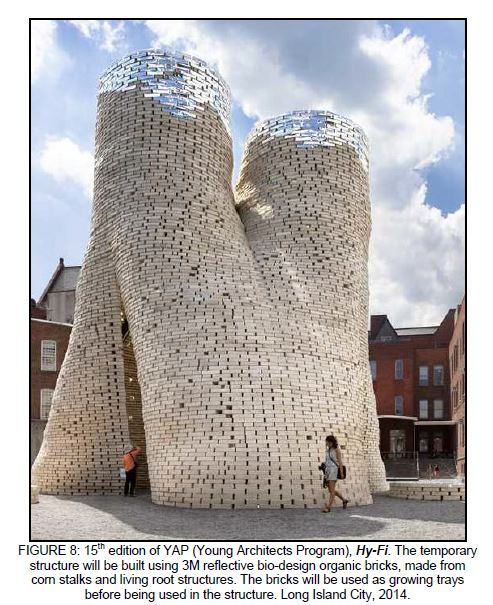
TOTAL: 100

